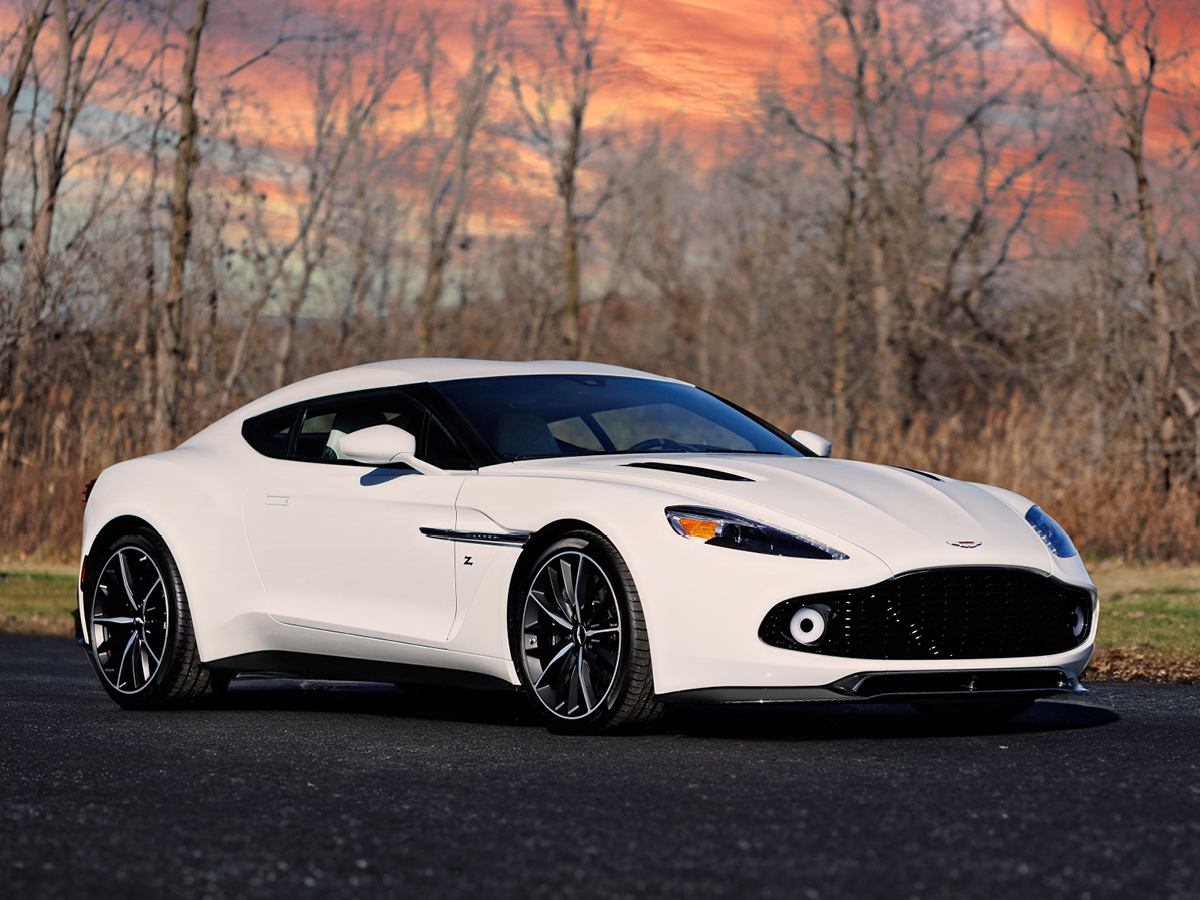Super-Rare, Super-Fast, Super-Beautiful
Ask an exotic-car buff to think of a famous name that seems to partner best with Aston Martin, and be prepared to hear them say “James Bond.” Credit – or blame – for that goes to the British automaker’s ardent 007 marketing tie-ins and co-branding. We take some solace – a “Quantum of Solace,” if you like – that many Aston buffs will also mention another name: Zagato.
Although not nearly as tightly linked to Italian design and coachbuilder firms as Ferrari was to Pininfarina and Scaglietti, Aston Martin’s relationship with Zagato produced numerous special, limited-production cars. From 2016-2019, the collaboration birthed four different carbon-fiber-body Vanquish Zagato models.
At its Phoenix, Arizona auction this month, RM Sotheby’s is offering #33 of the 99 Aston Martin Vanquish Zagato Coupes made, this one liveried in Escaping White over Pure Black and Pearl White leather and showing under 200 miles from its original owner. With its additional bespoke touches from Aston Martin Q Division, the car originally retailed for about $765,000. The auction notes a pre-sale estimate of $600,000-$650,000 for this British-Italian rarity.
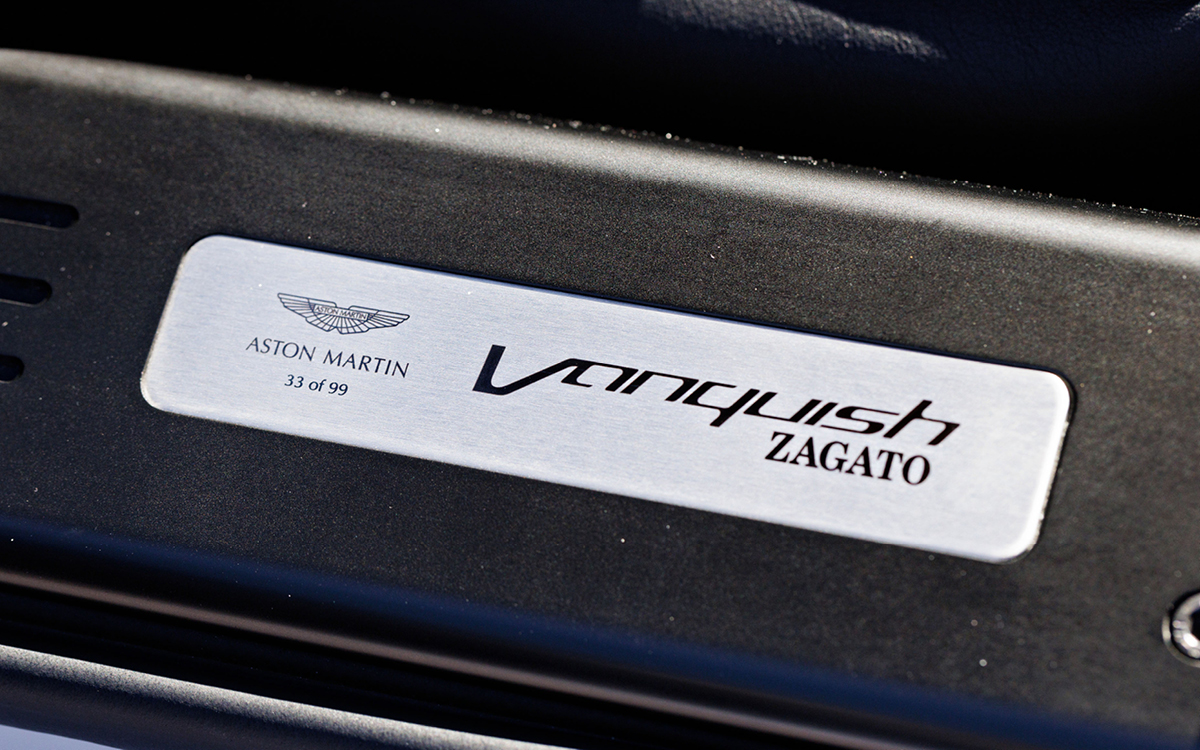
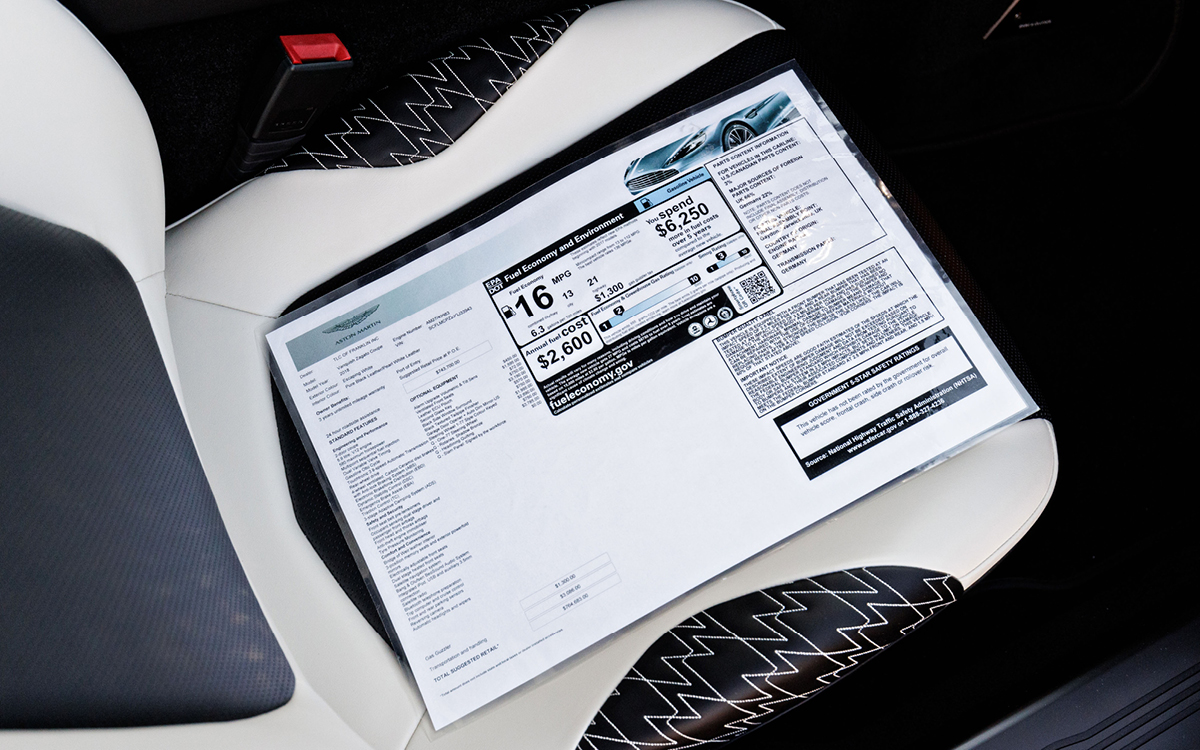
When Aston Martin Met Zagato
When Aston Martin wanted a special, competition-oriented version of its DB4 in 1959, the automaker shortened the wheelbase, cut weight, and boosted power to create the DB4 GT. With 94 made, it was positioned as a competitor to the Ferrari 250 GT Tour de France. But then Ferrari issued the smaller and lighter 250 GT Short Wheelbase Berlinetta.
Aston Martin next turned to Ugo Zagato’s design and coachbuilding company to create the 1961-1962 DB4 GT Zagato to build an even lighter, more competition-oriented version. Just 19 were made, and one of the six left-hand drive models sold for $9.5 million at RM Sotheby’s 2021 Monterey auction.
The two came together again in the late 1980s for Zagato’s angular re-interpretation of the Vantage V8, whose original design dated to 1969. Just 89 of these specials were made, 52 coupes and 37 convertibles. The relationship was renewed after a meeting between Elio Zagato’s son, Andrea, and Aston Martin CEO Ulrich Bez, at the 2001 Pebble Beach Concours d’ Elegance.
The first car to come out of the new collaboration was the stunning 2003 DB7 Zagato. The U.S. market did not get that coupe but instead got the even more beautiful DB AR1 Zagato exclusively for this market. (“AR” was for American Roadster.) Just 99 were made. Later, the 2012 Aston Martin V12 Zagato was planned for a run of 150 cars, but just about 60 were ultimately made.
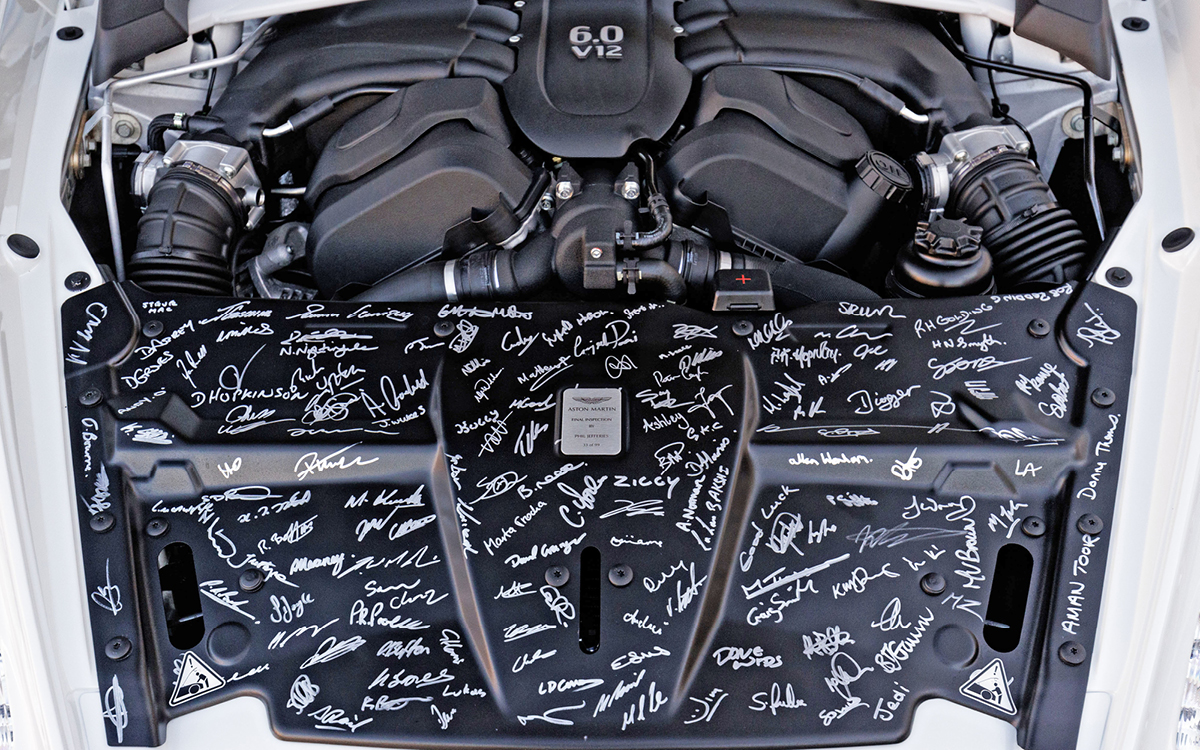
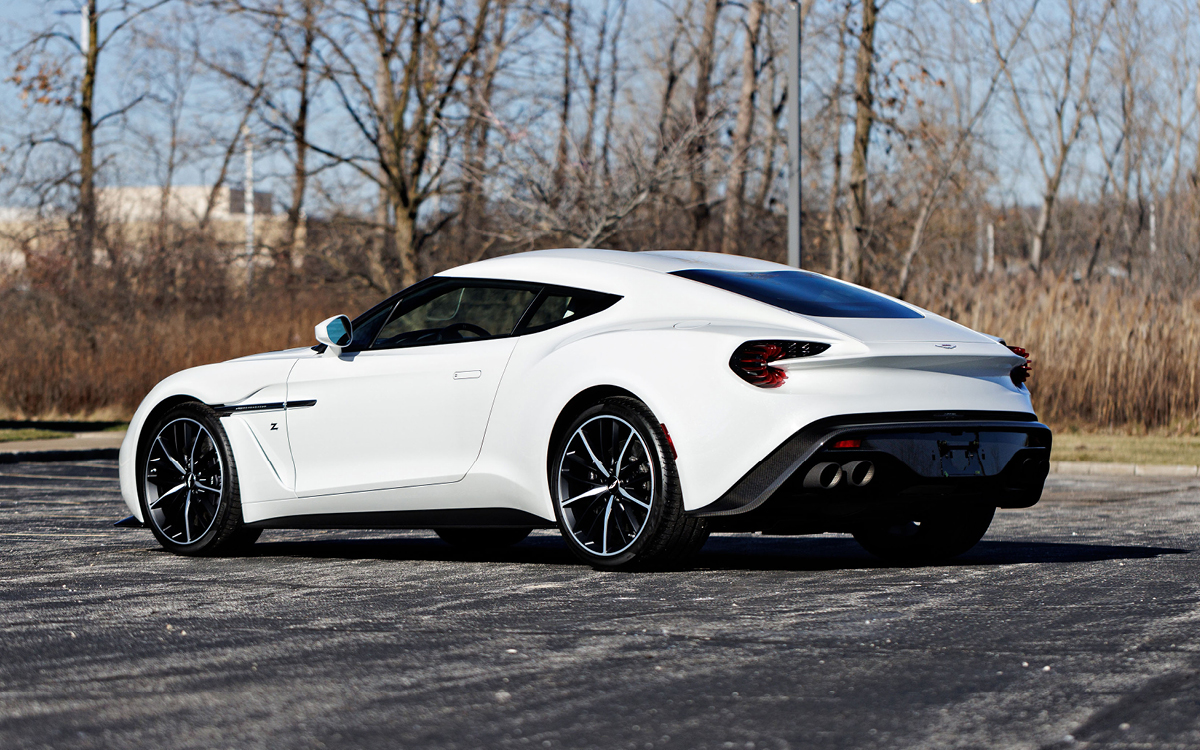
The Zagato Fab Four
The Vanquish Zagato program seemed to be the most ambitious yet from the two automotive greats: four different models built around the second-generation Vanquish platform. As noted, these were the Coupe, Volante (convertible), Speedster, and quasi-hatchback Shooting Brake. The endeavor yielded 325 total cars, including 28 Speedsters and 99 each of the others.
The Vanquish Zagato Coupe was the first to be unveiled, making its debut at the 2016 Concorso d’Eleganza Villa d’Este on Italy’s Lake Como. The design kept the Aston Martin grille shape on a new carbon-fiber body that showed very few cut lines. The “double bubble” roof style was took inspiration from the feature that helped clear race drivers’ helmets on some historic Zagato designs, including Ferraris and Fiat-Abarth racers. Aston Martin said the Vanquish Zagato’s “blade” taillights were inspired by those on its own Vulcan model. Some might also see a bit of 1950s Detroit over-styling in them, too.
The Zagato models were built around the stock Vanquish, including its ferocious yet refined 580-horsepower 6.0-liter V-12 engine, eight-speed automatic transmission, adaptive suspension damping, and carbon-ceramic disc brakes. Inside, the Vanquish Zagato Coupe wears unique stylized “Z” patterned leather seats and door panels. As documented by its original window sticker, the car offered by RM Sotheby’s has about $16,000 in options, including a color-keyed steering wheel from exotic Aston Martin One-77, which appears to have added $4,700 by itself.
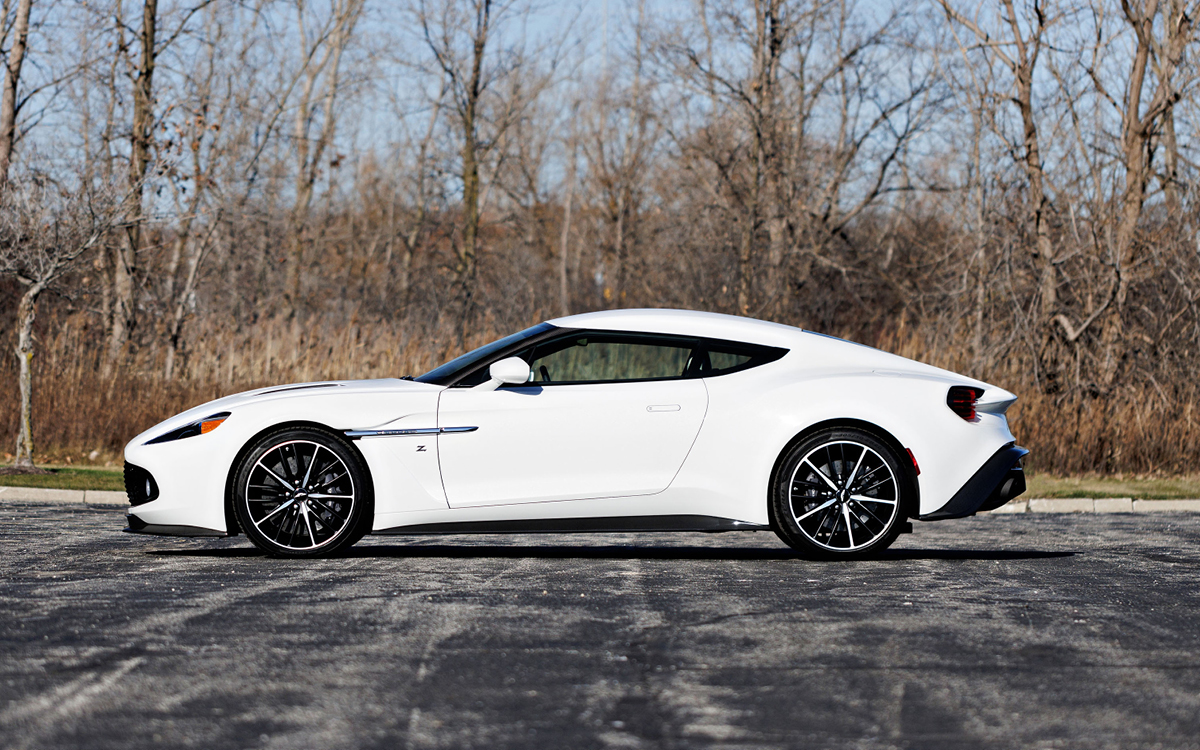
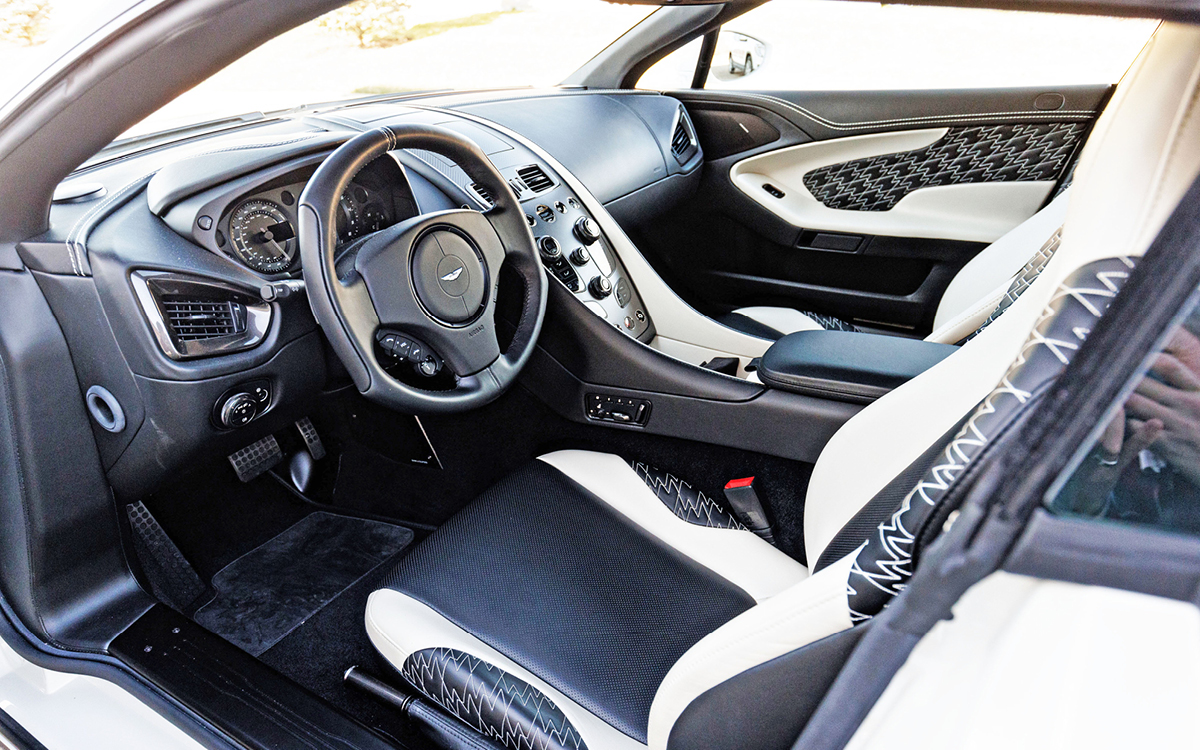
Epilogue
What could be better than one Aston Martin Zagato? Two, of course! After completing the last of the Vanquish models, the collaboration turned to marking Zagato’s 100th anniversary in 2019. The result was the DBZ Centenary Collection, a paring of the modern DBS GT Zagato with the DB4 GT Zagato Continuation. Just 19 pairs were made, each priced around a reported $8 million.


